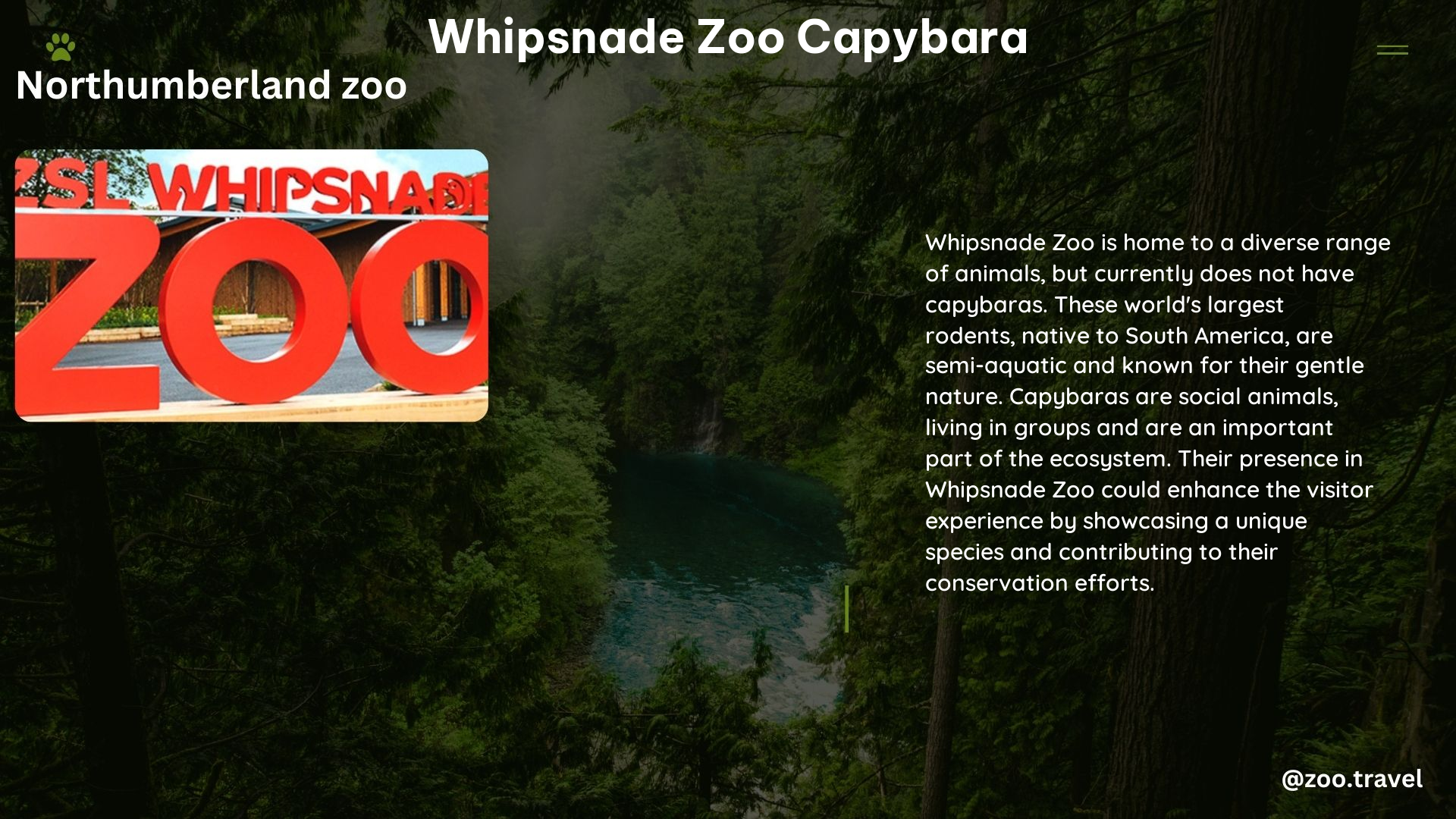Whipsnade Zoo in the United Kingdom is home to a remarkable group of capybaras, the world’s largest rodents. These semi-aquatic creatures, native to South America, can be found roaming freely around the park, particularly near the penguin exhibit. Visitors to the zoo can learn about the capybaras and their unique habitat in the Aquarium exhibit, which showcases some of the planet’s most extreme aquatic environments.
The Capybara: A Giant Among Rodents
Capybaras are truly remarkable creatures, standing up to 1.5 meters (4.9 feet) in length and weighing up to 65 kilograms (143 pounds). These giant rodents are known for their stocky build, large heads, and webbed feet, which allow them to thrive in both terrestrial and aquatic environments.
Capybara Characteristics
- Size: Capybaras are the largest living rodents in the world, dwarfing even the common beaver.
- Appearance: They have a distinctive rounded head, short snout, and small ears. Their fur is coarse and varies in color from reddish-brown to grayish-brown.
- Habitat: Capybaras are semi-aquatic and can be found in a variety of wetland habitats, including rivers, lakes, and marshes, throughout South America.
- Behavior: These social animals live in groups and are known for their calm and docile nature. They are excellent swimmers and can stay submerged for up to five minutes at a time.
Capybaras at Whipsnade Zoo

At Whipsnade Zoo, visitors can observe the capybaras in their natural habitat, as they roam freely around the park. The zoo’s capybara family can be found in the area near the penguin exhibit, where they can be seen grazing, resting, and socializing with one another.
Capybara Habitat at Whipsnade Zoo
The capybaras at Whipsnade Zoo are housed in an enclosure that closely resembles their natural habitat. The exhibit features a large pond, surrounded by lush vegetation and grassy areas, providing the capybaras with ample space to swim, graze, and rest.
Capybara Feeding and Care
The capybaras at Whipsnade Zoo are cared for by a team of experienced zookeepers who ensure that their dietary and environmental needs are met. The capybaras are fed a varied diet of grasses, vegetables, and specially formulated pellets, and their enclosure is regularly maintained to ensure optimal living conditions.
Interacting with the Whipsnade Zoo Capybaras
For those who want to get up close and personal with the capybaras, Whipsnade Zoo offers a range of animal experiences, including the “Meet the Capybaras” encounter. This experience allows visitors to hand-feed and learn about the individual personalities of the zoo’s capybara family.
“Meet the Capybaras” Experience
- Duration: Approximately 30 minutes
- Group Size: Up to 6 participants
- Activities: Hand-feeding the capybaras, learning about their behavior and habitat
- Availability: Offered on select days, subject to animal welfare and weather conditions
In addition to the “Meet the Capybaras” experience, Whipsnade Zoo also offers a unique “Hullaba-Snooze” sleepover experience, which includes a tour of the zoo before it opens to the public. This could be a great opportunity to see the capybaras and other animals at their most active.
Exploring the Aquarium Exhibit
While the capybaras are the main attraction at Whipsnade Zoo, the Aquarium exhibit is also worth a visit. This exhibit features ten of the planet’s most extreme aquatic habitats, including the home of two crocodiles, providing visitors with a glimpse into the lives of these ancient reptiles.
Aquarium Exhibit Highlights
- Extreme Aquatic Habitats: The Aquarium exhibit showcases a diverse range of aquatic environments, from tropical coral reefs to icy polar seas.
- Crocodile Enclosure: The exhibit is also home to two crocodiles, allowing visitors to observe these ancient predators up close.
- Educational Opportunities: The Aquarium exhibit offers a wealth of information about the various aquatic species and their unique adaptations.
Conclusion
Whipsnade Zoo’s capybara exhibit is a must-see for anyone interested in learning about the world’s largest rodent. Visitors can observe these fascinating creatures in their natural habitat, interact with them through the “Meet the Capybaras” experience, and explore the Aquarium exhibit to learn more about the diverse aquatic life found around the globe.
Whether you’re a seasoned zoo enthusiast or a first-time visitor, Whipsnade Zoo’s capybara exhibit is sure to leave a lasting impression and inspire a greater appreciation for the natural world.
